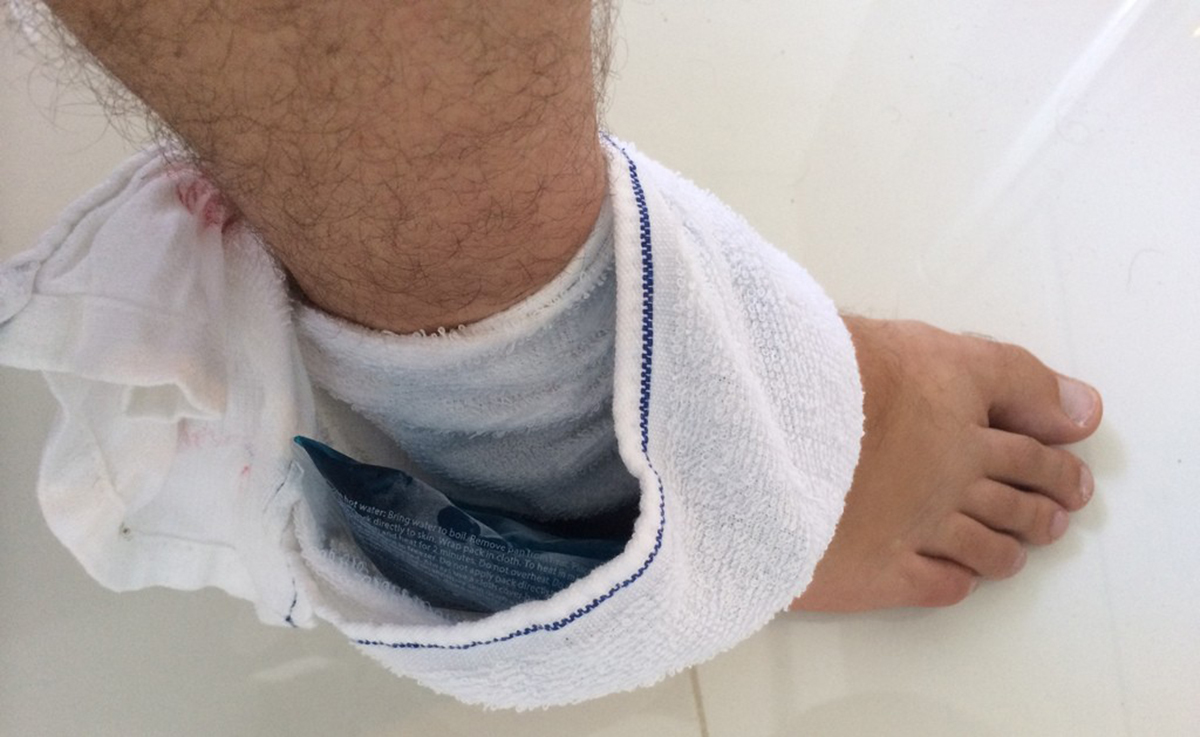Table of Contents
RICE and MICE
These acronyms will help you get through the first few day of being hurt.

Start with RICE:
Rest doesn't mean 'do a bit less than normal.' It means Rest. Wear a sling. Walk on a crutch. Rest the injured part for at least 24 hours, and try for 36-48. Take an anti-inflammatory like Ibuprofen, Aspirin, Paracetamol or something your doctor gives you, and if it's possible, use compression.
Make sure you don't go to bed with a compression bandage on, and check that your anti-inflammatory doesn't interfere with other medication or pre-existing conditions (for example, Aspirin thins the blood and irritates the stomach lining and kidneys, while paracetamol is bad for the liver). Apply 'cryotherapy' - ice. Many supermarkets sell bags of ice; a good alternative is a cloth bag of grains or beans, frozen. Some people advocate certain protocols - 20 minutes on, 20 minutes off, is a popular one. 20 minutes every hour is another. What really matters is using the ice for a reasonable amount of time, long enough to cool the site of the inflammation, without damaging the flesh. The usual emergency cryotherapy solution in the home is frozen peas! Â Elevation simply means raising the injured part, to reduce blood pooling around the injury.
The sooner you start applying RICE the better; get some ice on it in the field or at the gym if you can. Â An elastic bandage in your gym bag could save you weeks of rehab!
MICE is the next step of rehab.
The last three letters stand for Ice, Compression and Elevation. The first one stands for Movement. That doesn't mean 'get back on the horse!'
Getting Back On the Horse
That's sound advice if the problem is confidence.
Trust yourself. Don't worry that if you stop you'll never be able to start again. Look after your injury; don't try to be Superman. The Movement in MICE should mean beginning gentle movement well within your range of motion, with very small loads or no loads, continuing compression, ice and elevation and constantly monitoring the injury for pain, twinges or any changes.
Moving Your Mice
Rather than give complex abstract explanations, I'm going to look at a couple of fairly common injuries and talk about how to get back on top of things. For convenience, I'm using a knee injury both times.
1: Patellar Tendinitis
This is inflammation of the tendon that leads to the kneecap from the quads. Because the quads are big and strong and involved in a lot of sports movements this is a relatively common injury. Ice, put a compression bandage on the knee area, rest as much as possible for 24-48 hours and sit with the affected leg elevated.
After the first 24-48 hours, begin slow, deloaded movements of the knee, making sure that the knee is moving in only one plane - there's no side-to-side or shearing movement.
Do short sets often throughout the day to lubricate the joint and tendon sheath and gradually regain mobility. Focus on mobility, and stay away from maximal strength work for a couple of weeks - return to strength training with loads you can do 15-20 reps with but use only 8-12 reps for a week or two to regain full function.
2: MCL Sprain
A sprain is a strain injury to a ligament, a tissue that holds two bones together. The MCL is the Medial Cruciate Ligament, attaching the femur to the fibia. It's commonly injured by sudden twisting or shearing movements of the knee. Start, as always, with RICE. After 48 hours, begin slow, careful movements within the parameters defined by pain:
Gradually seek to regain mobility in the knee. Consider using an elasticated bandage while working on mobility. Longer term rehab protocols for more major injuries often use a knee brace to take the stress off the MCL and let it heal. Injuries to ligaments take anything from several weeks to several months to heal, so tread carefully, literally and metaphorically.
See Also: Achilles Tendon Rehabilitation Tips and Exercises
General Advice
If you have strong pain that doesn't go away, major swelling, loss of function or a noticeably changed shape at the site of your injury, see a doctor. In cases of sprains and tears or if you suspect them, see a doctor.
Some sprains require surgical repair and some require physiotherapy for recovery.
Use your injury as a wake-up call. Work to strengthen the general area and look at how you do your sport; try to find safer ways to move.
If you have an injury you don't now how to deal with, or you have a story to share, why not get in touch in the comments section?
- Photo courtesy of Better Than Bacon by Flickr : www.flickr.com/photos/slurm/2913800550/
- Photo courtesy of Kai Hendry by Flickr : www.flickr.com/photos/hendry/12672437285/


Your thoughts on this